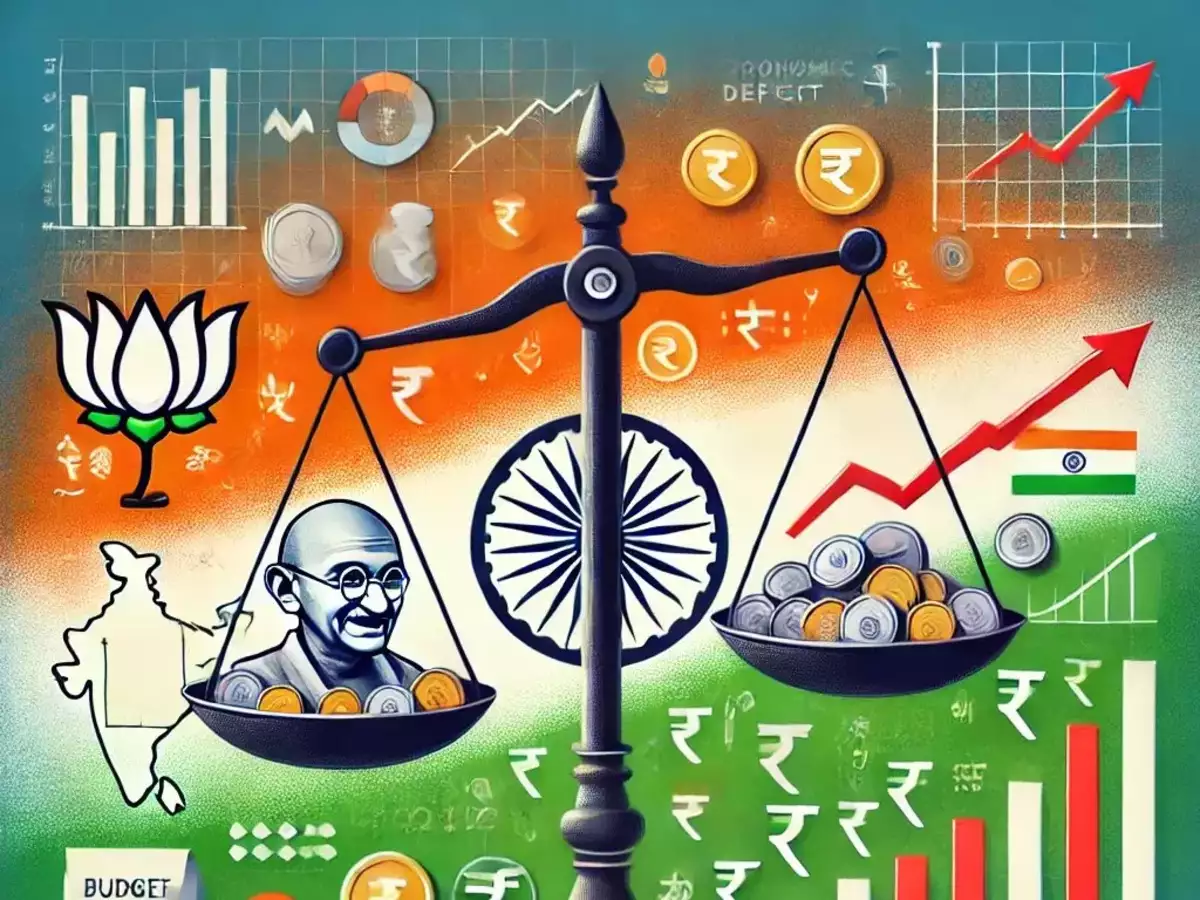India’s Budget: A Response to Economic Challenges

The Indian government has recently unveiled its first full-year budget under Prime Minister Narendra Modi’s coalition government. This budget comes after the ruling party lost its outright majority in parliament last year. Finance Minister Nirmala Sitharaman announced several measures aimed at addressing the country’s slowing economic growth, rising prices, and declining consumption among the middle class. After experiencing remarkable growth rates exceeding 8%, India is now facing its slowest economic expansion in four years. Stagnant wages and high food prices are significantly impacting consumer spending and corporate profits. This article highlights the key takeaways from the budget and its implications for the Indian economy.
Tax Cuts for the Middle Class
One of the most significant announcements in the budget is the increase in income tax exemption limits for the middle class. The government has raised the threshold to 1.2 million rupees (approximately $13,841 or £11,165), making this amount entirely tax-free. This move is expected to provide relief to millions of taxpayers and stimulate spending. Additionally, the finance minister has made adjustments to other income tax slabs, which will likely leave more disposable income in the hands of the middle class.
Economists, including Aurodeep Nandi from Nomura, suggest that these tax concessions aim to address the slump in urban consumption. However, the overall impact may be limited, as only a small fraction of the Indian population pays direct taxes. In 2023, only 1.6% of Indians, or about 22.4 million people, paid income taxes. Despite this limitation, the stock market reacted positively to the announcements, with shares of automobile, consumer goods, and online grocery companies experiencing a rally. This indicates a level of optimism among investors regarding the potential for increased consumer spending.
State-Led Infrastructure Spending Remains on Track
Infrastructure spending has been a cornerstone of India’s economic strategy since 2020. The government has announced a modest increase in its infrastructure expenditure target for the current year, raising it from 11.1 trillion to 11.2 trillion rupees (approximately $129.18 billion or £104.21 billion). This commitment to state-funded capital expenditure on major projects such as roads, ports, and railways is crucial for sustaining economic growth.
In addition to increasing expenditure targets, the government plans to offer interest-free loans to states. This initiative aims to encourage further investment in infrastructure development at the state level. Despite an unexpected contraction in actual spending during the first nine months of the fiscal year, the government’s commitment to infrastructure remains strong. By continuing to invest in these projects, the government hopes to stimulate economic activity and create jobs, which are essential for recovery in the post-pandemic era.
Boost for Nuclear Energy and Insurance Sectors
The budget has set ambitious goals for the nuclear energy sector, aiming to generate 100 gigawatts (GW) of nuclear power by 2047. To achieve this, the government has launched a Nuclear Energy Mission with a budget of 200 billion rupees (approximately $2.3 billion or £1.86 billion). The plan includes deploying five indigenous reactors by 2033 and amending existing laws to facilitate private sector participation in the nuclear energy market.
In addition to nuclear energy, the budget also addresses the insurance sector. The government has increased foreign direct investment limits in this sector from 74% to 100%. This change is expected to attract foreign insurers to invest in India’s growing insurance market, which is poised for strong premium growth. Analysts, such as Mohammed Ali Londe from Moody’s Ratings, believe that this move will enhance profitability and drive further investment in the sector.
Small-Scale Industries and Regulatory Reform in Focus
The budget places significant emphasis on supporting small and micro industries, which account for 35% of India’s manufacturing and create millions of jobs. To bolster this sector, the government has allocated fiscal support of 1.5 trillion rupees (approximately $17.31 billion or £13.96 billion) over the next five years. This funding aims to stimulate growth and innovation among small businesses.
Furthermore, the government has announced the formation of a high-level committee to undertake regulatory reforms in non-financial sectors. This committee will focus on reducing the compliance burden on corporations, making it easier for businesses to operate. The government has also raised production-linked subsidies and reduced import duties for local manufacturing units across various sectors, including textiles and electronics. These measures are designed to promote private investment, which has been sluggish since the COVID-19 pandemic.
Balancing the Fiscal Math
Despite the increased budget outlays for infrastructure and support for various sectors, the Indian government faces the challenge of balancing economic growth with fiscal responsibility. The budget reaffirms the government’s commitment to reducing the fiscal deficit from 4.8% this year to 4.4% by 2026. This commitment is crucial for maintaining investor confidence and ensuring sustainable economic growth.
Global rating agencies closely monitor these fiscal figures, as lower debt levels can lead to improved investment ratings and reduced borrowing costs for the country. However, India’s recent economic slowdown complicates this balancing act. The finance ministry’s economic survey anticipates GDP growth to slow to between 6.3% and 6.8% in the financial year ending March 2026, aligning with forecasts from the Reserve Bank of India.
As the budget discussions conclude, attention will shift to the central bank’s monetary policy meeting later this month. The Reserve Bank of India has maintained policy rates at 6.5% since February 2023 but may consider easing borrowing costs as both growth and inflation begin to decline. Recently, the central bank announced plans to inject $18 billion into the domestic banking system to alleviate cash shortages, a move seen as a precursor to potential rate cuts.
Observer Voice is the one stop site for National, International news, Sports, Editor’s Choice, Art/culture contents, Quotes and much more. We also cover historical contents. Historical contents includes World History, Indian History, and what happened today. The website also covers Entertainment across the India and World.

